
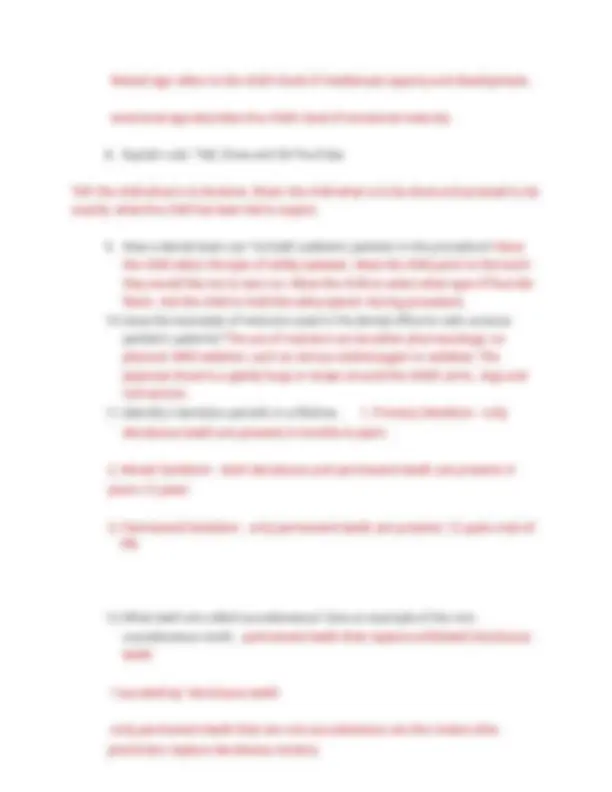



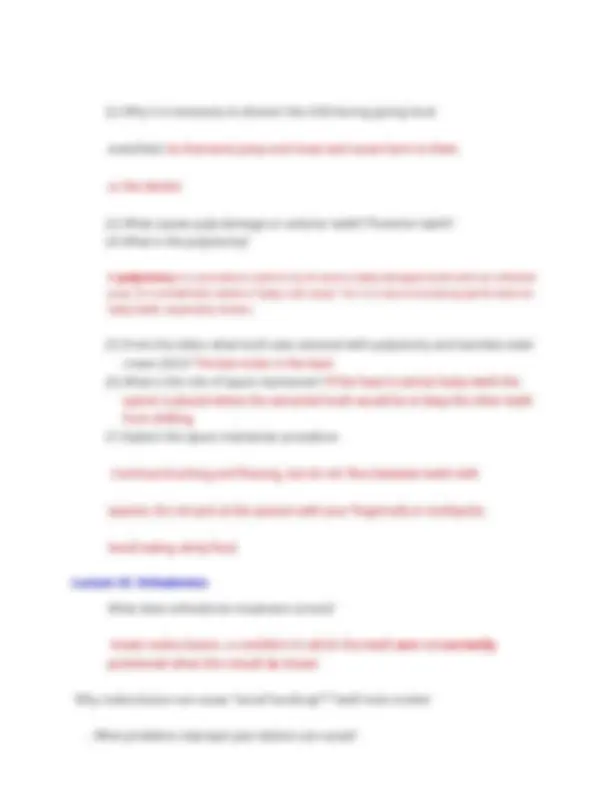

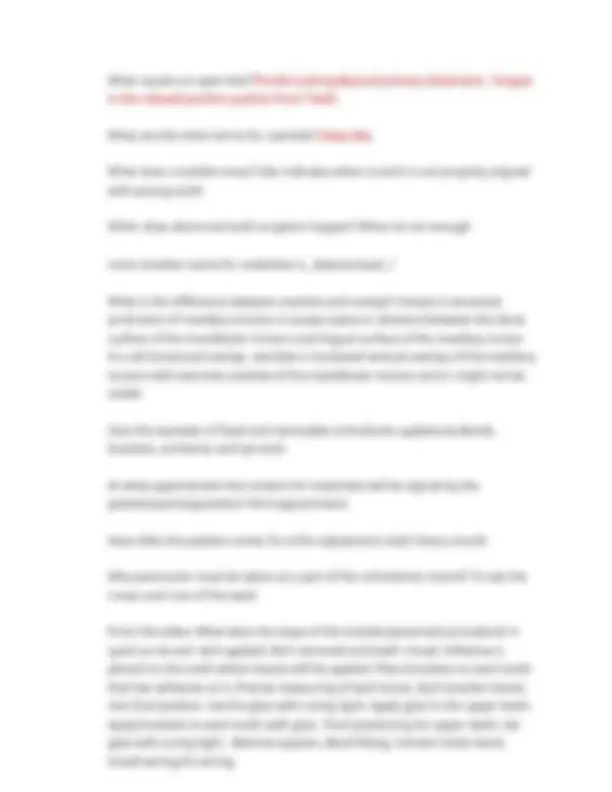

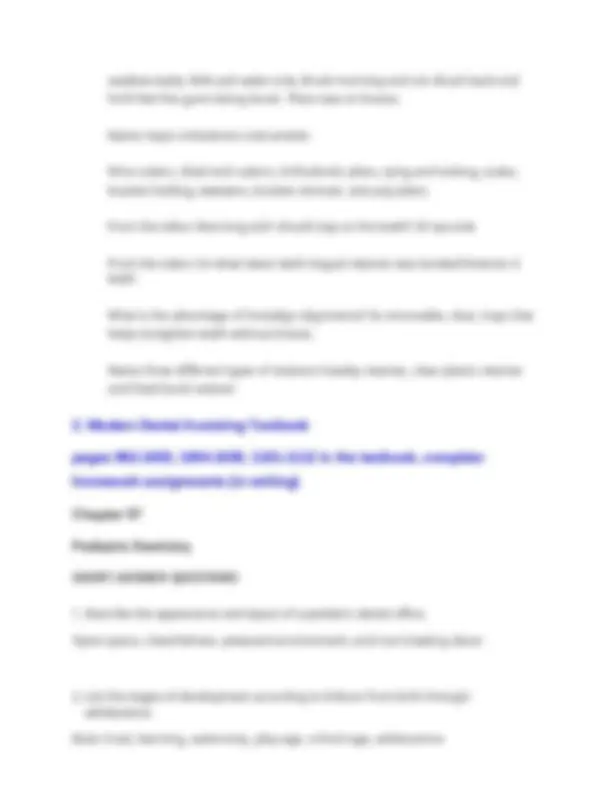
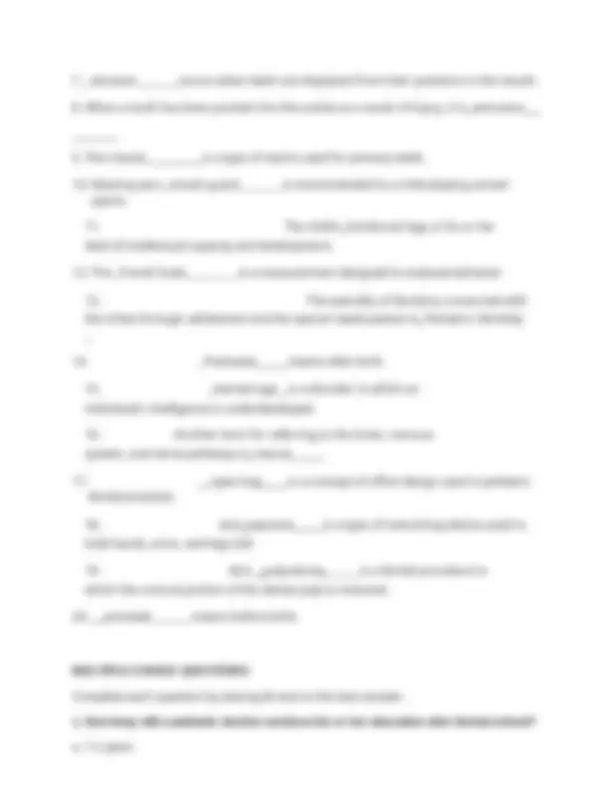

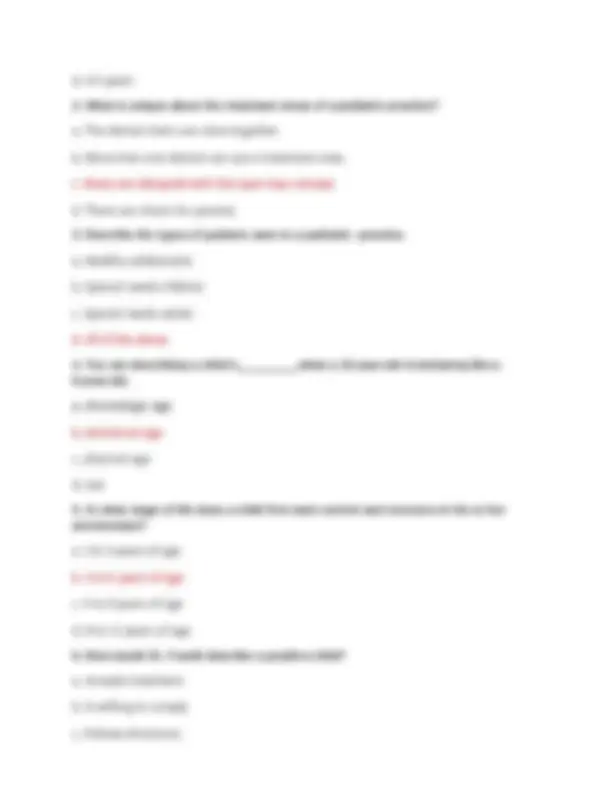
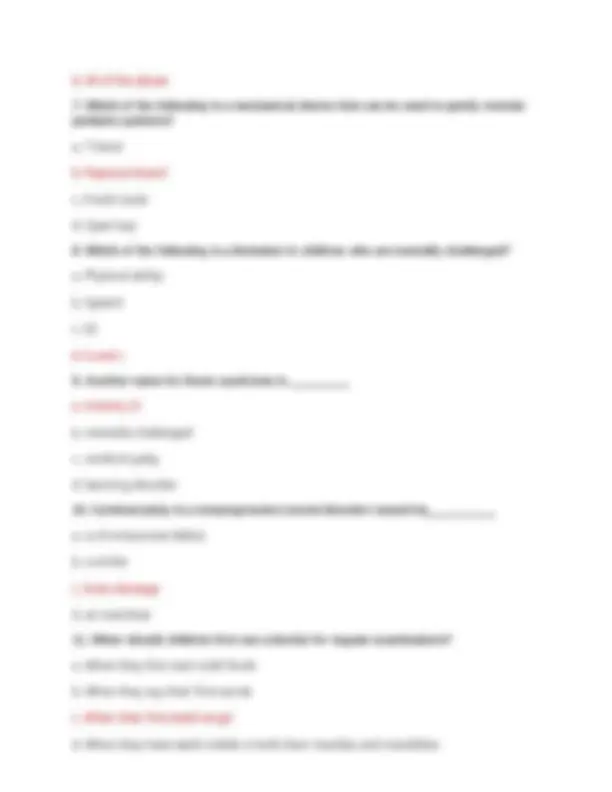
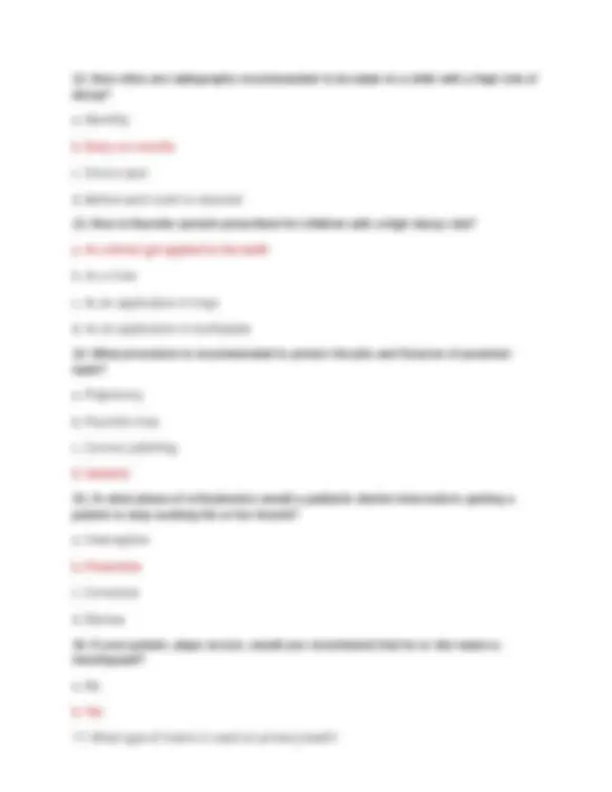
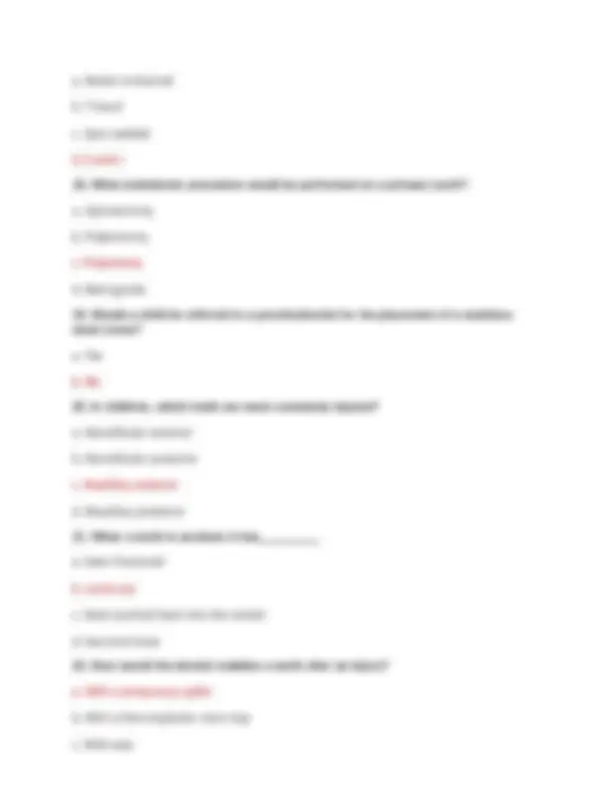
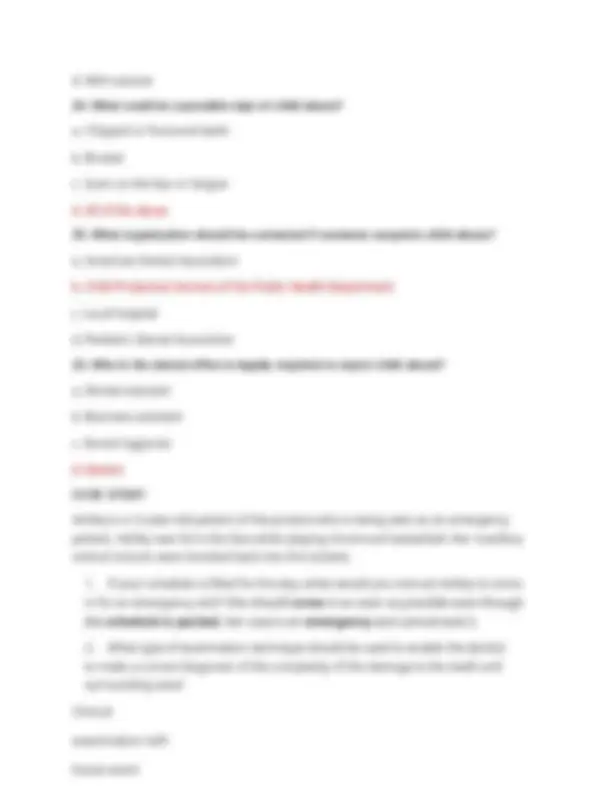
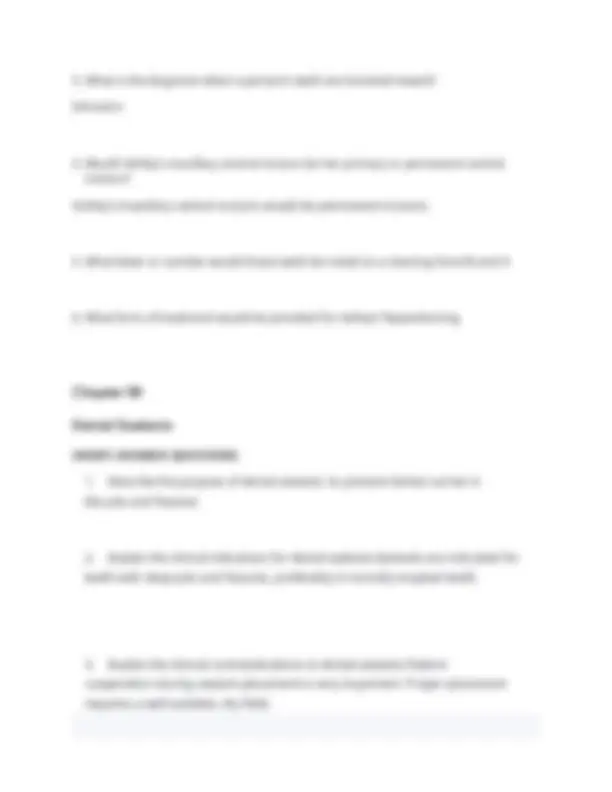
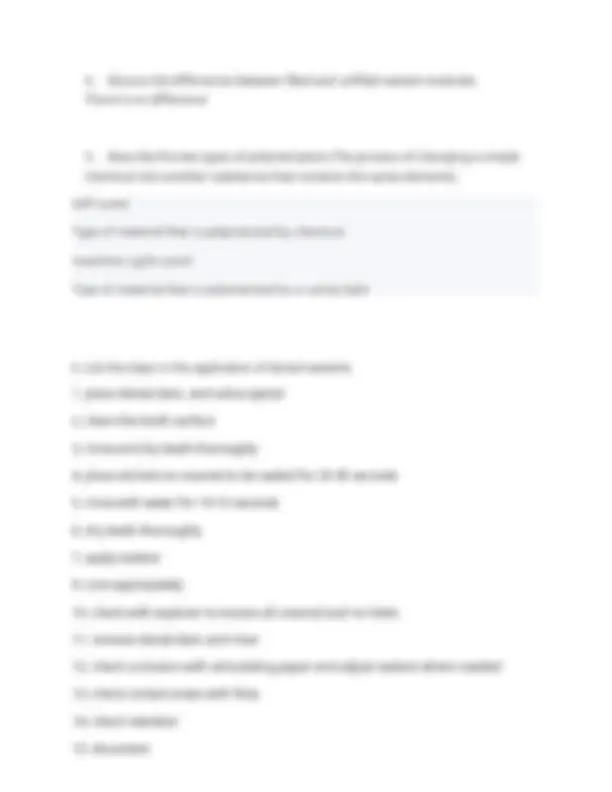
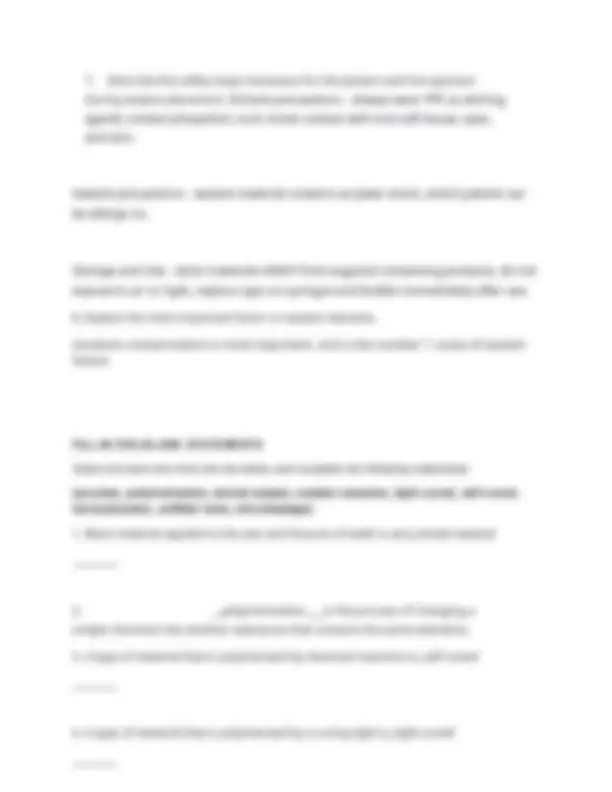

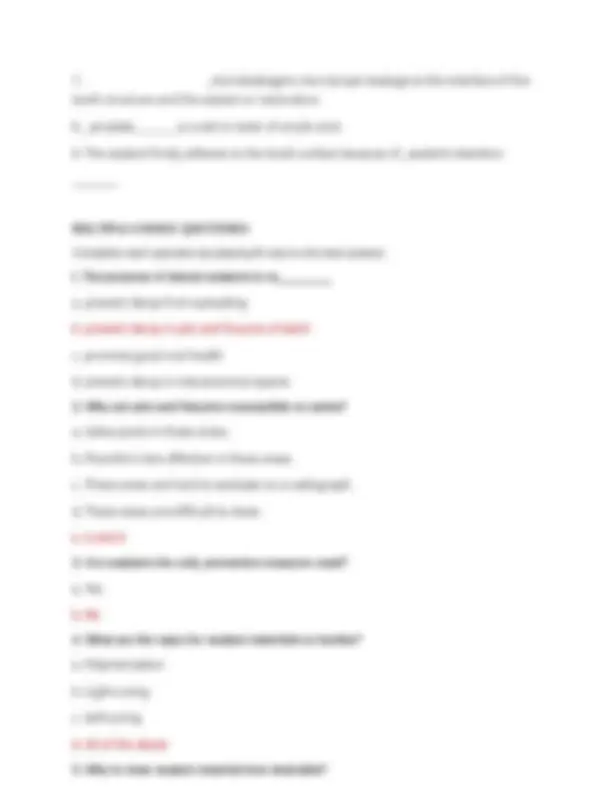
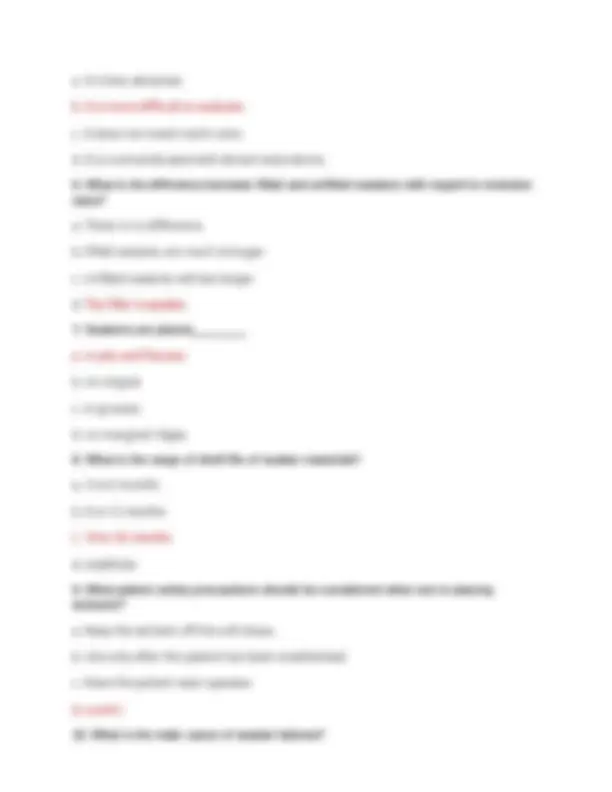
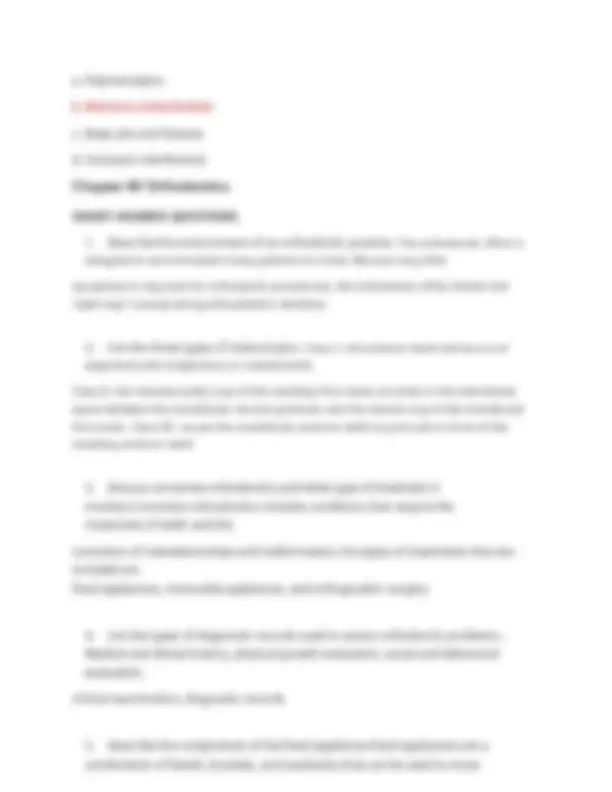

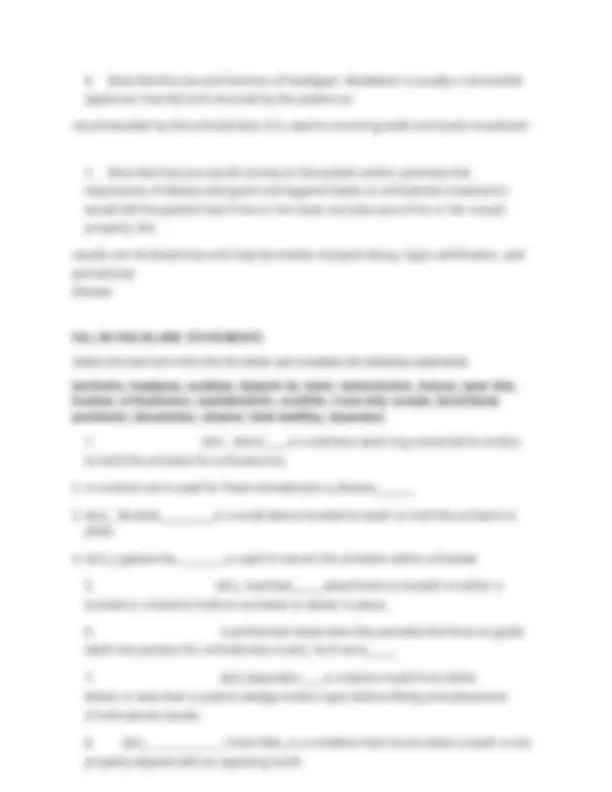

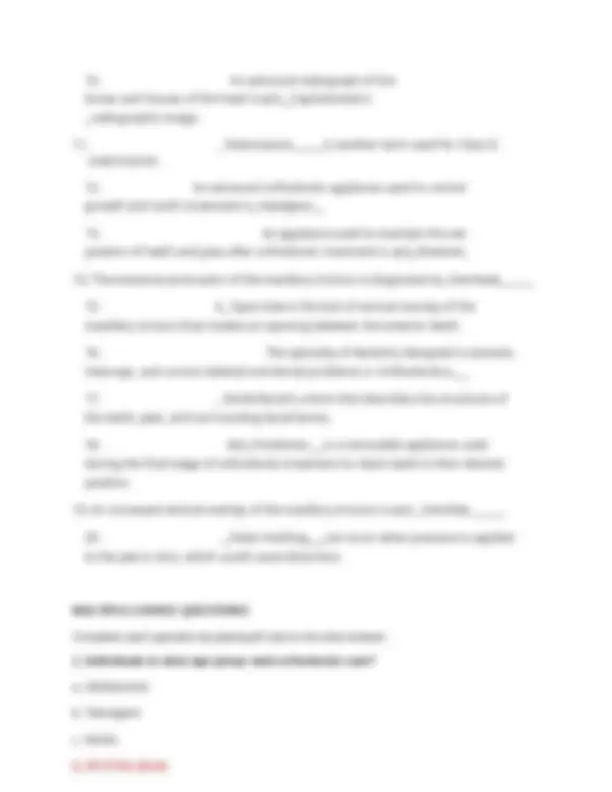

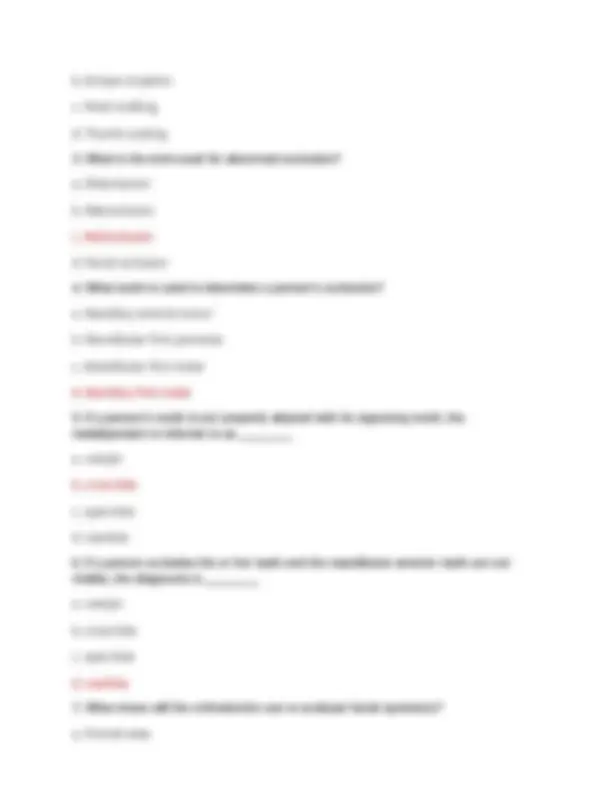
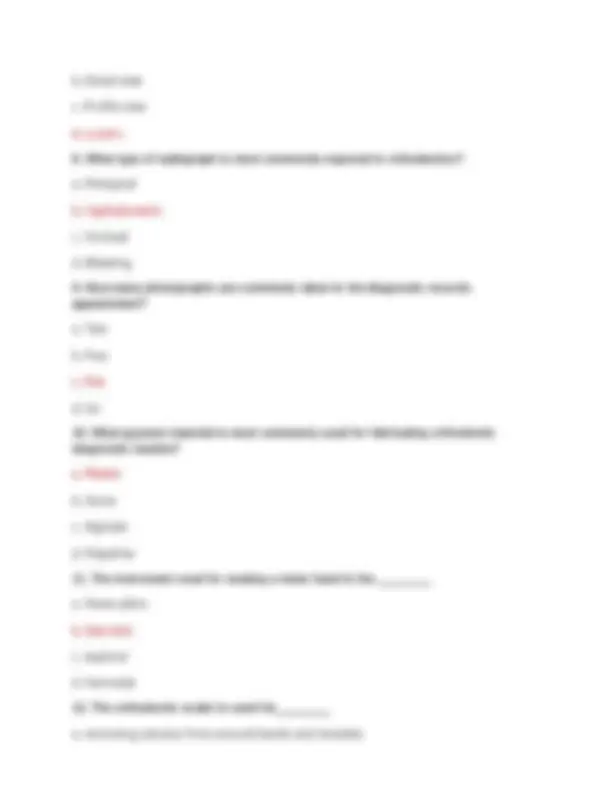
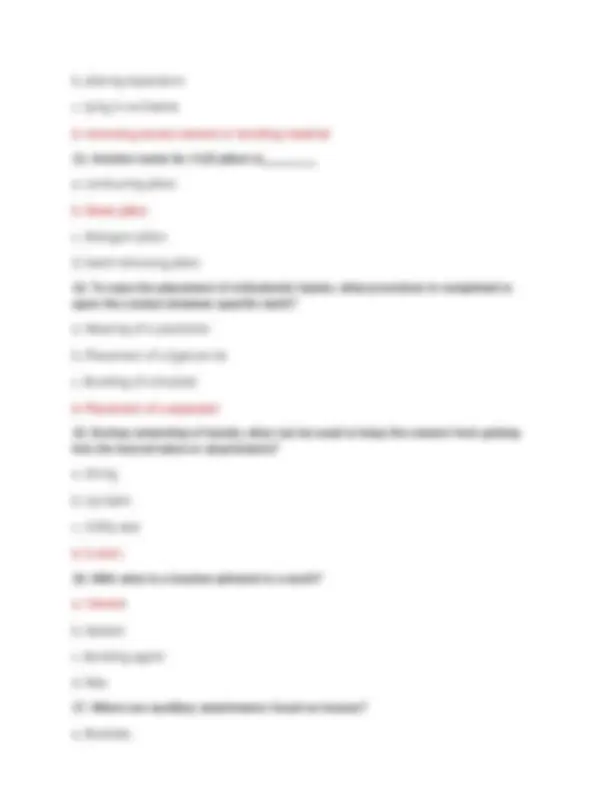
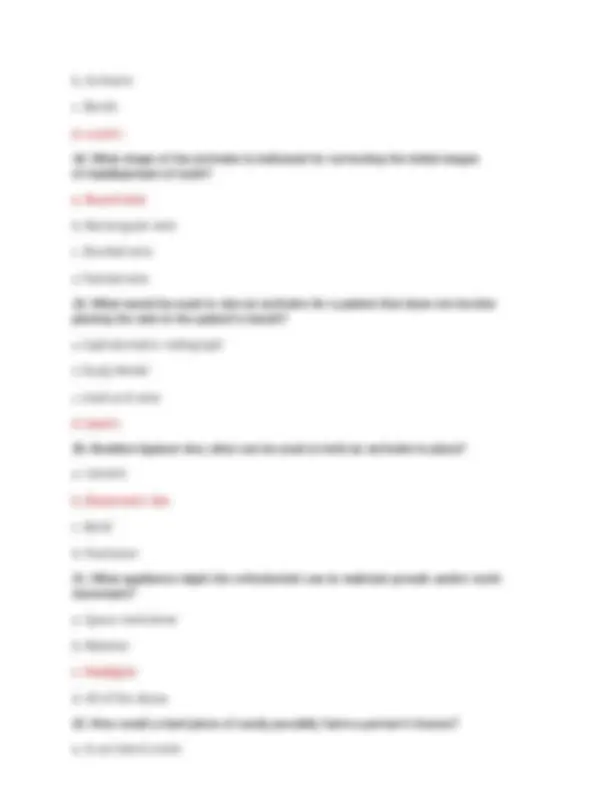
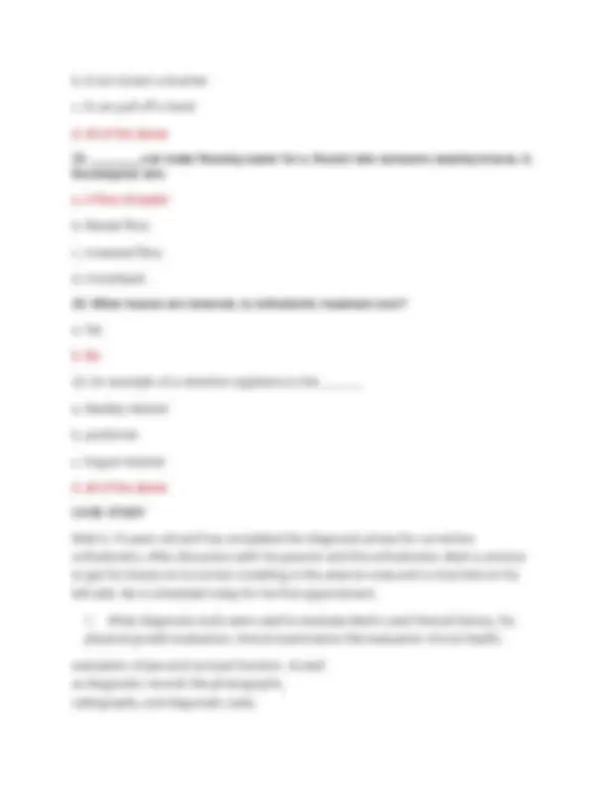
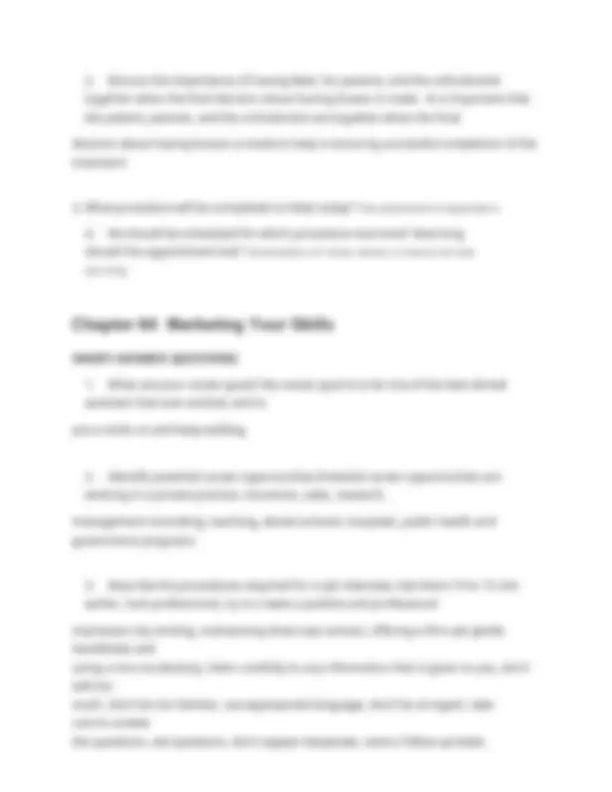
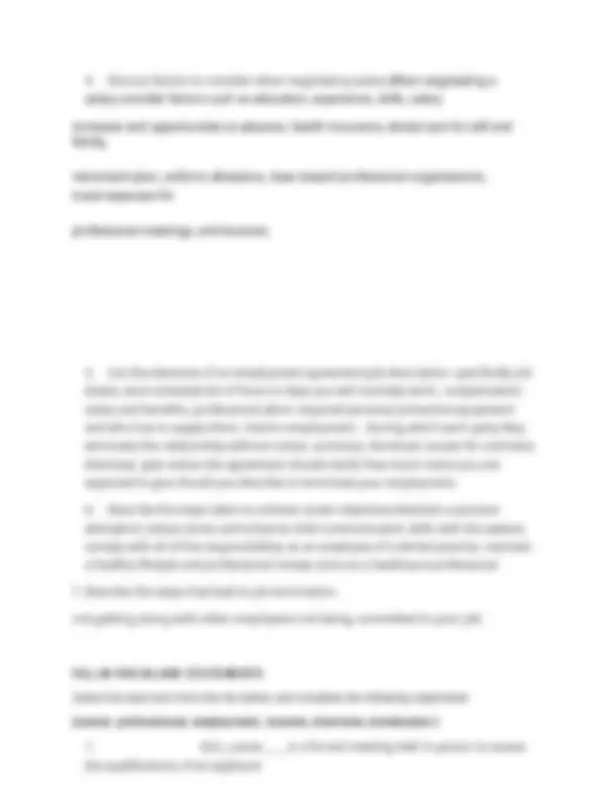

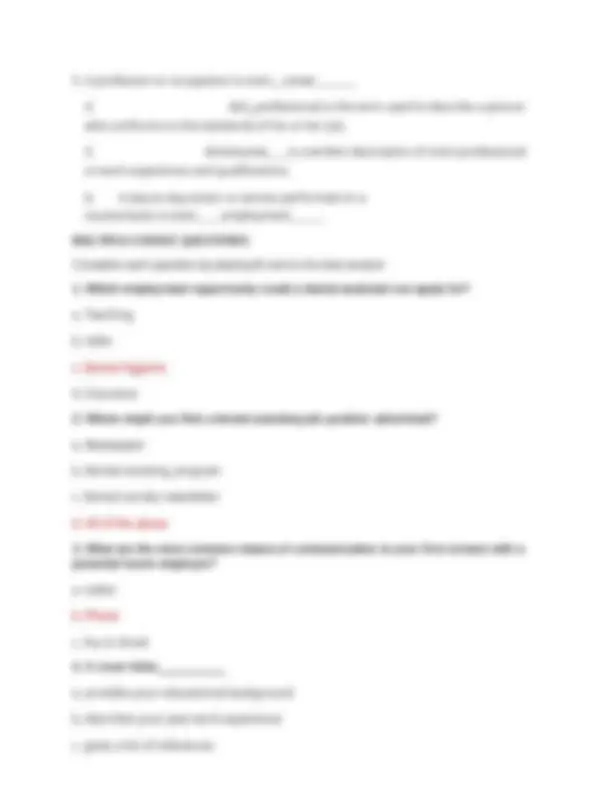
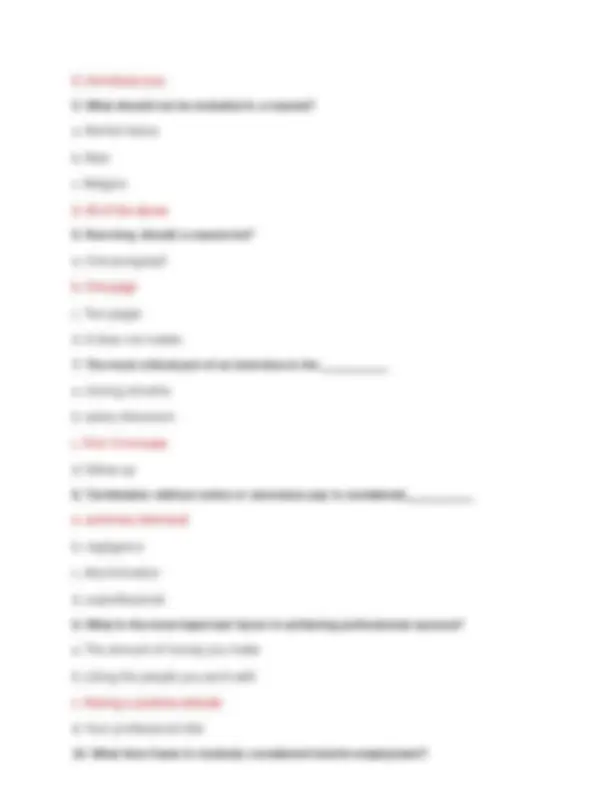



Study with the several resources on Docsity

Earn points by helping other students or get them with a premium plan


Prepare for your exams
Study with the several resources on Docsity

Earn points to download
Earn points by helping other students or get them with a premium plan
Community
Ask the community for help and clear up your study doubts
Discover the best universities in your country according to Docsity users
Free resources
Download our free guides on studying techniques, anxiety management strategies, and thesis advice from Docsity tutors
LECTURE #1 PEDODONTICS QUESTIONS AND CORRECT ANSWERS ALREADY GRADED A+
Typology: Exams
1 / 47

This page cannot be seen from the preview
Don't miss anything!








































psychologically effective because children are often hesitant to express fear or to misbehave in the presence of other children.
and they may notice the difference in crown size between larger permanent teeth and smaller primary teeth. some children may notice crowding of the teeth as they shift positions during eruption Occurs from 6 months to 6 years of age
Sealants Pulp treatment and spacers
with chewing, speaking, breathing, and even sleeping. The shape of your jaws also affects the way your face looks.
Why malocclusion causes dental caries and gum disease? When teeth are not in proper alignment or certain teeth are hitting harder together than others, the first thing that may happen is gum recession. Name members of the orthodontic team The orthodontics and the orthodontist assistant Why most orthodontic offices have Open Bay design? Less materials used and they see 30 patients a day. To see as many pt needed Why it is beneficial for the orthodontist to have an in-office dental laboratory? It keeps overhang cost down they dont have to ship it out. What is malocclusion? of the teeth is a misalignment problem that can lead to serious oral health complications. It's also known as: crowded teeth; crossbite; overbite What factors? Genetics and habits What causes malocclusion? Missing tooth or underdeveloped jaw, thumb sucking, mouth breathing habits. Explain Class 1, 2, 3 malocclusions Class 1 - normal occlusion or posterior area but misalign anterior teeth. Class 2 distoclusion ( overbite) class 3 mesioclusion (underbite)
What causes an open bite?Thumb sucking Beyond primary dissension, Tongue in the relaxed position pushes Front Teeth. What are the other terms for overbite? Deep bite, What does crossbite mean? bite indicates when a tooth is not properly aligned with posing tooth When does abnormal tooth eruption happen? When its not enough room Another name for underbite is Mesiocclusal? What is the difference between overbite and overjet? Overjet is excessive protrusion of maxillary incisors it causes space or distance between the facial surface of the mandibular incisors and lingual surface of the maxillary incisor it's call horizontal overlap. overbite is increased vertical overlap of the maxillary incisors with extreme overbite of the mandibular incisors and it might not be visible Give the example of fixed and removable orthodontic appliances.Bands, brackets, archwires and tye ends At what appointment the consent for treatment will be signed by the patient/parent/guardian? third appointment How often the patient comes for ortho adjustment visits? Every month Why panoramic must be taken as a part of the orthodontic record? To see the crown and root of the teeth From the video: What were the steps of the bracket placement procedure? A quick scrub and etch applied. Etch removed and teeth rinsed. Adhesive is placed on the tooth where braces will be applied. Place brackets on each tooth that has adhesive on it. Precise measuring of each brace. Each bracket moves into final position. Set the glue with curing light. Apply glue to the upper teeth. Apply brackets to each tooth with glue. final positioning for upper teeth. Set glue with curing light. Remove spacers, Band fitting, Cement molar band, Install wiring,Fix wiring.
From the video: What hygiene instruction and diet restrictions were given to the patient by an orthodontist? Nothing hard sticky or chewy, Only eat stuff that you can
b. 2-3 years c. 3-4 years
d. 4-5 years
2. What is unique about the treatment areas of a pediatric practice? a. The dental chairs are close together. b. More than one dentist can use a treatment area. c. Many are designed with the open-bay concept. d. There are chairs for parents. 3. Describe the types of patients seen in a pediatric - practice. a. Healthy adolescents b. Special needs children c. Special needs adults d. All of the above 4. You are describing a child’s when a 10-year-old is behaving like a 6-year-old. a. chronologic age b. emotional age c. physical age d. size 5. At what stage of life does a child first want control and structure in his or her environment? a. I to 3 years of age b. 3 to 5 years of age c. 6 to 9 years of age d. 9 to 12 years of age 6. How would Dr. Frankl describe a positive child? a. Accepts treatment b. Is willing to comply c. Follows directions